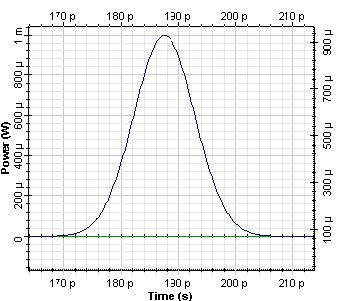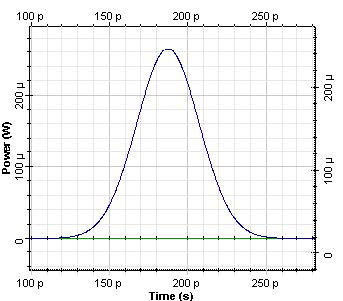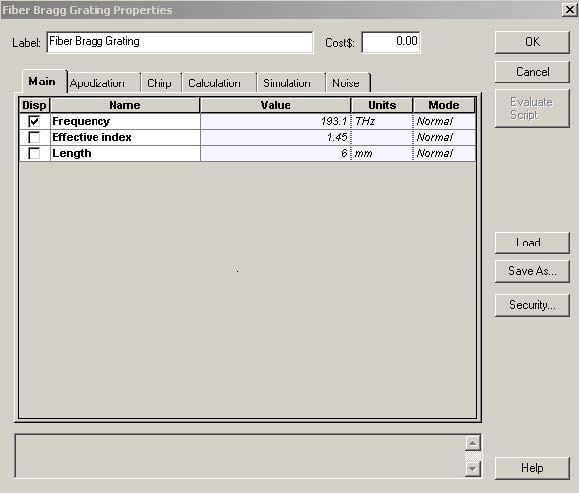This lesson demonstrates the possibility for dispersion compensation with the help of fiber Bragg Grating created with the Fiber Grating component. This component allows design of apodized and chirped fiber gratings that are able to provide dispersion compensation in optical system.
The physical idea behind this compensation is following: creating of an apodised linear chirped grating allows us to create a ** time delay between different spectral components of the signal.
For example, in SMF at 1.55μm, group velocity dispersion creates a negative chirp of the pulses, which means that the higher frequencies (which propagate faster) are in the leading part of the pulse and the lower (propagating slower) in the trailing one.
Because of this different velocity of propagation of different spectral components, the pulse spreads. If we create fiber grating with period linearly reducing along the grating, because the higher frequencies will reflect after longer propagation in the grating a time delay between lower and higher frequency components will appear which is just opposite to this created in the SMF. Therefore propagating and reflecting our pulse in this device will allow to compensate the dispersion broadening of our pulse.
Figure 1 shows the project layout.
Figure 1: Project Layout for dispersion compensation with Fiber Bragg grating component in OptiSystem
The following shape was generated in the Optical Gaussian pulse generator with an initial 12.5 ps pulse and global parameters of a 40 Gb/s bit rate and a 0.5 times bit slot.
Figure 2: Initial Gaussian pulse
The pulse was launched in 10 km SMF. As a result of this propagation, the width of the pulse increases approximately four times.
Figure 3: Gaussian pulse after 10 km propagation in SMF
Fiber Bragg Grating with following properties has been used: frequency 193.1 THz, effective index =1.45, length = 6 mm, apodization uniform, index of modulation 0.0001, linear chirp with a linear parameter 0.0001, number of segments 101 and maximum number of spectral points 1000.
Figure 4: Parameters of uniform, apodized, linear chirped Fiber Bragg Grating
The result of dispersion compensation performed from this fiber grating component is obtaining of a pulse with approximately 20 ps width.
Figure 5: Pulse after dispersion compensation with fiber grating with uniform apodization and linear chirp






